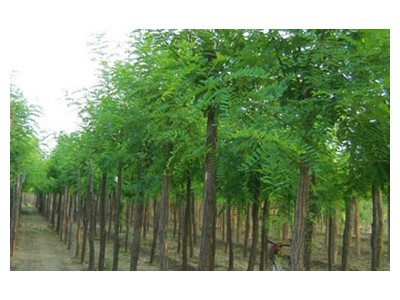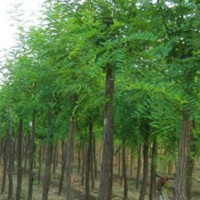Robinia pseudoacacia, also known as Robinia pseudoacacia, is a deciduous tree belonging to the leguminous family and the genus Robinia. Its bark is gray-brown to dark-brown, shallow to deep longitudinally split, thin and smooth. Native to North America, it is now widely introduced to Asia, Europe and other places. The bark of Robinia pseudoacacia is thick, dark, with many cracks; the roots of the leaves have a pair of 1~2mm long thorns; the flowers are white, fragrant, and spikes; the fruits are pods, and each pod contains 4 to 10 seeds. Robinia pseudoacacia wood is hard, corrosion-resistant, burns slowly, and has a high calorific value. The locust flower is edible. The ho大桥由蝗虫鲜花非常甜,the honey production is also high. Cultivated varieties include Hongsen locust, safflower black locust, golden leaf black locust and so on. Among all the black locust trees, the locust tree grows fastest and is called the king of black locust trees.
The root system of this species is shallow and well developed, easy to wind down, and has strong adaptability. It is an excellent sand-fixing and soil-preserving tree species. The Huanghuai River Basin in the North China Plain has a lot of afforestation, and other areas are mostly green and sporadically planted, and they are often street trees.
The acacia tree has a tall crown and bright green leaves. Whenever the flowering season is green and white, it is elegant and fragrant. It can be used as a street tree or a shade tree. Pioneer tree species for greening of industrial and mining areas and barren hills and wastelands. It has strong resistance to sulfur dioxide, chlorine, photochemical smog, etc., and has a strong ability to absorb lead vapor. There are nodules on the roots, which also improves the effect of soil power. After the leaves are fallen in winter, the branches are sparse and upward, resembling a silhouette, and the shape has the charm of Chinese painting.










